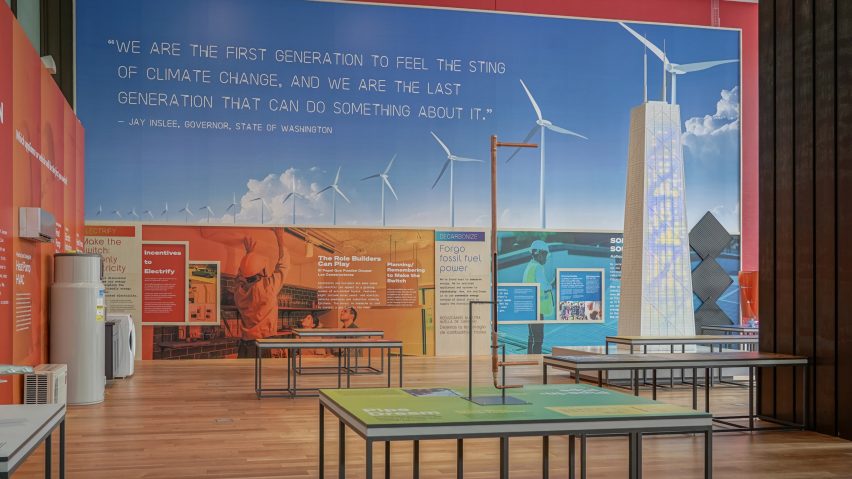
Chicago's buildings "still not as efficient as those built 130 years ago" says Energy Revolution curator
The Energy Revolution exhibition at the Chicago Architecture Center aims to demonstrate that the city's buildings need to become much more energy efficient.
Energy Revolution, which was organised by architect Doug Farr and Chicago Architecture Center (CAC) director of exhibitions Eve Fineman, seeks to educate the public on architecture's impact on the climate by using historical charts, interactive installations and full-scale reconstructions.
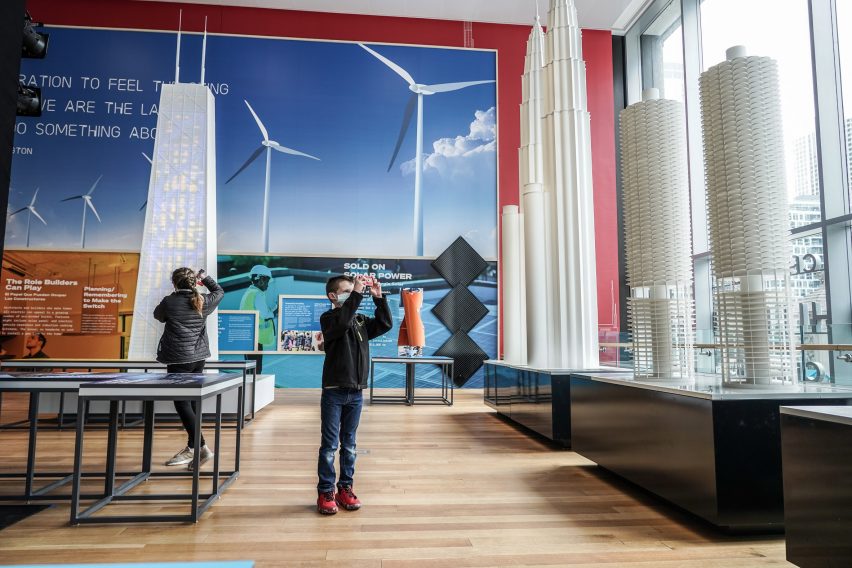
"The city of Chicago passed a climate emergency ordinance in February of 2020 and has pretty much done nothing about it," said Farr, founder of Chicago architecture studio Farr Associates.
"Many cities declare a climate emergency – there are hundreds – and most of them sit on their hands and do nothing," he continued, citing this inaction as a driving force behind the exhibition.
The exhibition takes aim at the way that big buildings under-perform. A chart showing most "efficient" buildings in terms of energy use built since the late 1880s demonstrates how little progress has been made.
"The most efficient buildings in Chicago were built in the 1880s," said Farr, while the least were built in the 1950s.
"Were still not as efficient as buildings built 130 years ago," he continued
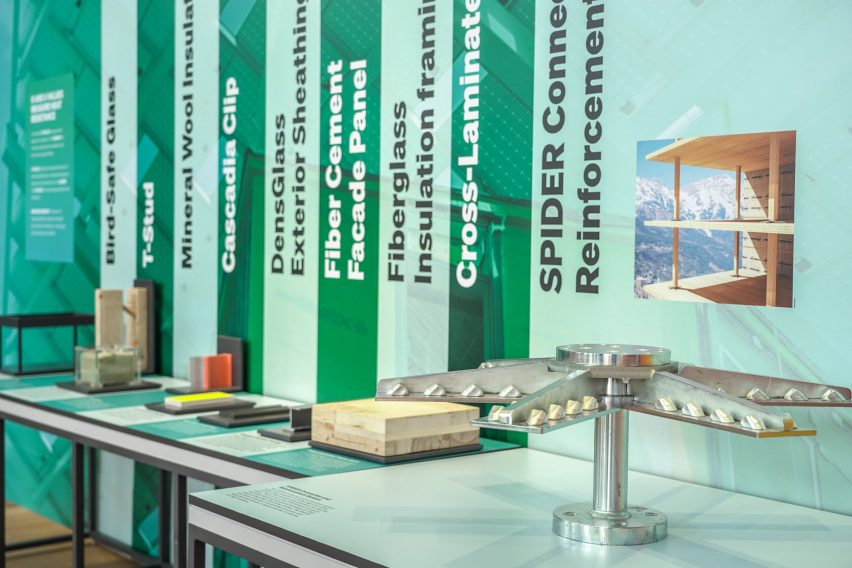
According to Farr, the main culprit is a lack of insulation and efficient heating and cooling technologies. This means that "the United States wastes 63 per cent of all the energy we produce," he said.
A model of 875 North Michigan Avenue – also known as the John Hancock Center – designed by Skidmore Owings & Merrill (SOM), shows infrared data during the winter time. This aims to demonstrate how modern buildings lose far more energy than the earlier structures in the city.
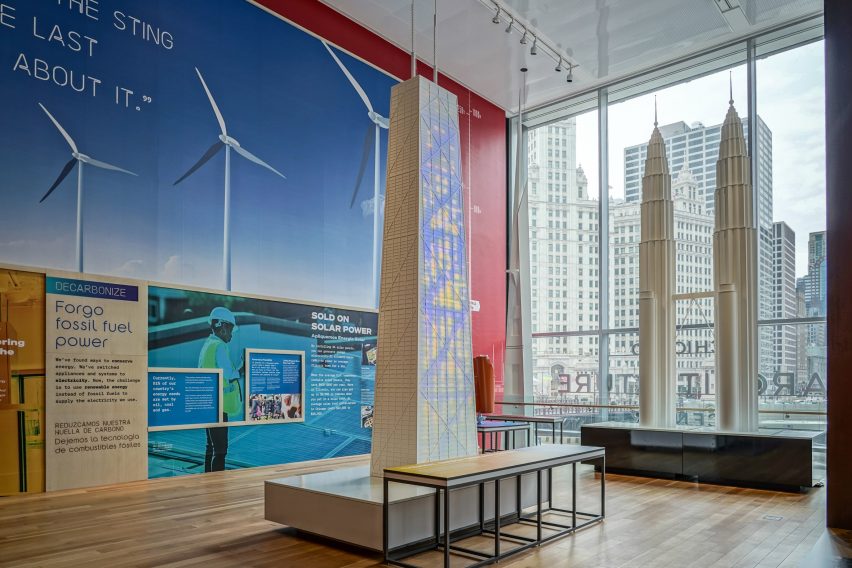
To show why this happens, the exhibition includes three life-sized cross-sections of facades that show different construction methods across that 130 year period. The first is the Monadnock Building, which is the tallest masonry structure in the world built in the late 1800s.
The second is from Ludwig Mies van der Rohe's 860-880 Lake Shore Drive and the third is a recent project from Farr's own office called the Academy for Global Citizenship.
Farr's building shows a return to heavily insulated walls that use recycled materials as well as sun-shading as opposed to flat glass facades.
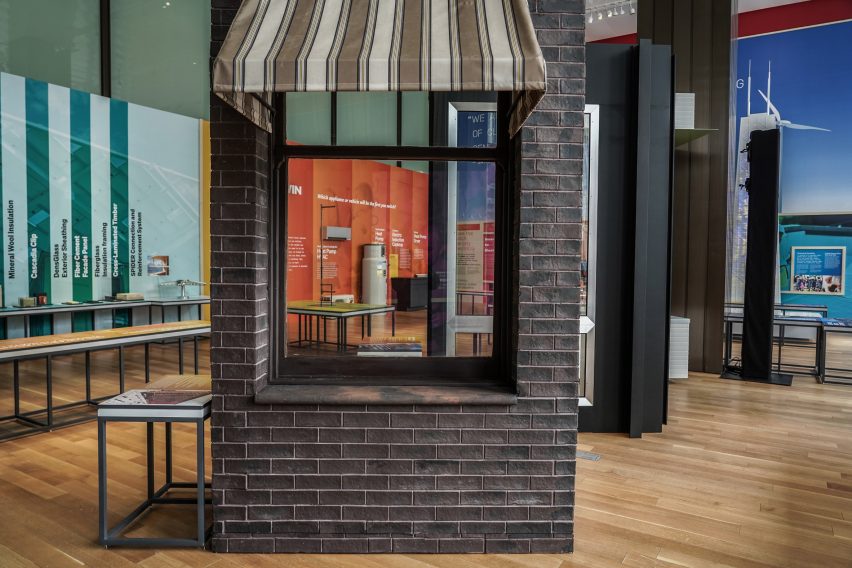
"Oftentimes the one thing the architect gets to design is the facade," said Farr who wanted to demonstrate how certain cooling methods of the late 20th century were abandoned for the sake of "aesthetics" during the middle of the 20th century.
"I was trained by Miesians, I was trained by modernists, and I was beat over the head with 'forget history'," he said, adding that when he talks to city planners and developers they note the continued ubiquity of unsustainable modern styles.
"It's a really interesting cultural moment when an aesthetic practice that people are drawn to express happens to make all the wrong moves on climate."
However, Farr believes that if architects can recommit to using materials that make sense for a changing climate and changing cities, then the "energy revolution" can take place.
"The purpose of the architecture with Monadnock was building a city of commerce, Mies was expressing an aesthetic ideal," he said, but thinks that what should design contemporary architecture is that "we are designing for our fragile existence".
To show some of the ways that building can be more efficient, the exhibition includes a "petting zoo of materials" with new forms of insulation, studs and panels that reduce waste and increase insulation.
The exhibition also shows how more efficient heating units and dishwashers can be installed, so that individuals can make their homes more efficient.
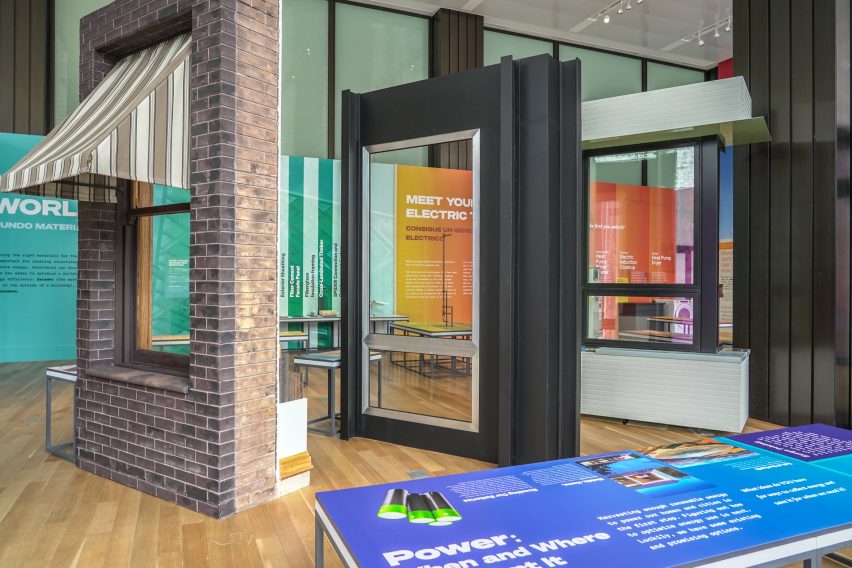
Farr founded Farr Associates in 1990. He has written widely about climate change and in 2020 he launched an initiative Carbon Free Chicago, which aims to end the city's dependence on fossil fuels.
The Chicago Architecture Center was founded as a non-profit in 1966 and regularly facilitates exhibitions as well as architectural tours of Chicago.
Other recent discussions on climate change in architecture include urbanist Vishaan Chakrabarti's insistence on high-density cities to accommodate growing populations.
In April 2022, the IPCC released a report saying that architecture was "lagging behind" other sectors in the fight against climate change.
The photography is by David Hernandez
Energy Revolution is on show until 17 October 2022. See Dezeen Events Guide for an up-to-date list of architecture and design events taking place around the world.